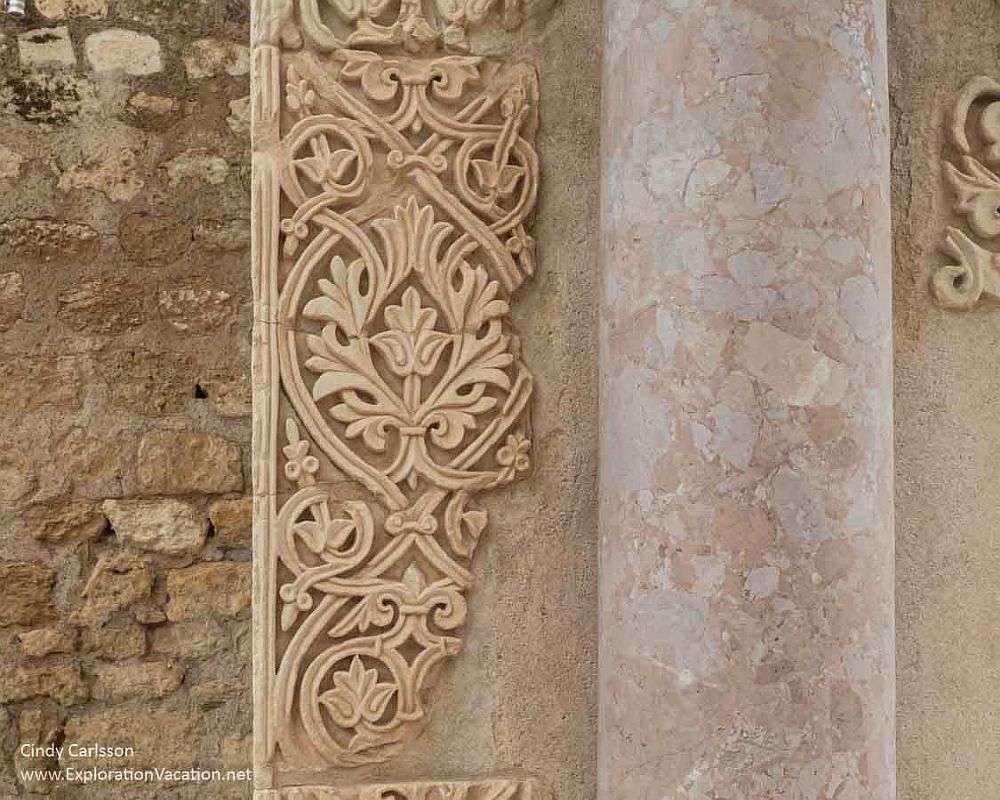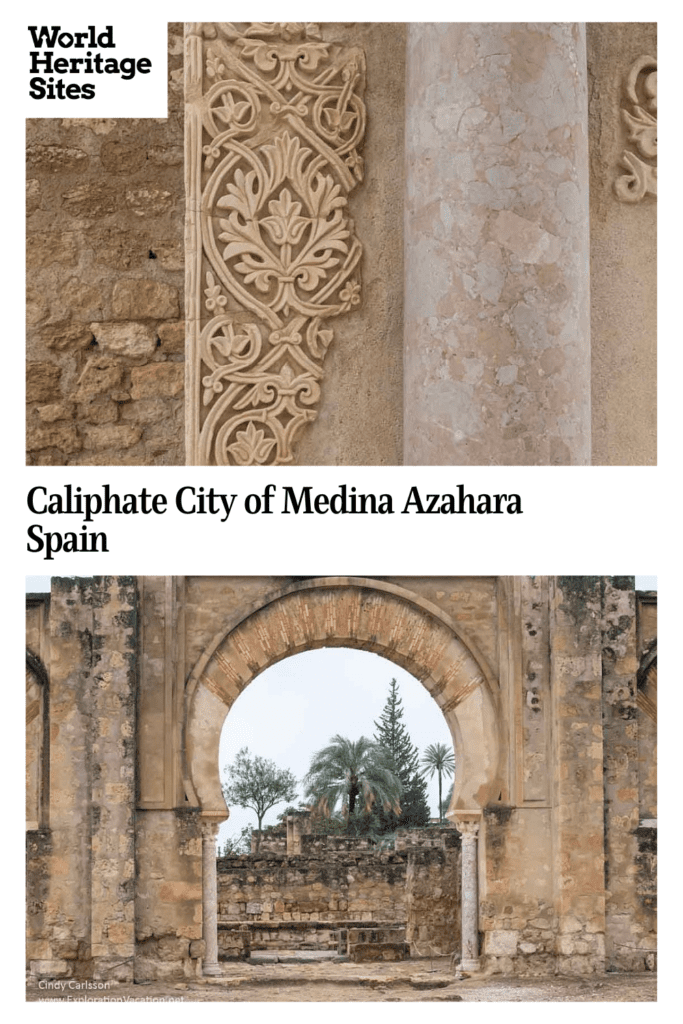The Caliphate City of Medina Azahara
By Cindy Carlsson
What is the Caliphate City of Medina Azahara site?
The Caliphate City of Medina Azahara (Madinat al-Zahra) World Heritage site preserves the ruins of the short-lived 10th-century capital of the Caliphate of Córdoba in Andalucía. It was a fortified royal Umayyad city that included palaces, residences, a mosque, administrative buildings, ceremonial halls, baths, workshops, military and service quarters, gardens, aqueducts, bridges, and more. Construction began about 940, but the city was sacked, destroyed, and abandoned within 80 years. It was subsequently pillaged, resulting in the removal of almost all material of value.
Buried in its own debris, it was subsequently lost to history until the 20th century. Excavation began in 1911 and continues today.
Disclosure: This article contains affiliate links. Making a purchase through an affiliate link will mean a small commission for this website. This will not affect your price.

Why is Medina Azahara a UNESCO World Heritage site?
UNESCO explains that the Caliphate City of Medina Azahara is a World Heritage site because it “is a complete urban complex including infrastructure, buildings, decoration and objects of daily use, and provides in-depth knowledge about the material culture of the Islamic civilization of Al-Andalus at the zenith of its splendour. . ..”

What can you expect on a visit to the Caliphate city of Medina Azahara?
Despite what one might imagine from UNESCO’s language, Medina Azahara is a ruin. While some reconstruction has occurred and more is ongoing, the site is mostly partial walls with a few pillars and arches. It would be almost impossible to envision the ruins as the elaborate structures they once were without illustrations (or the visitor center’s movie) that show how the site once looked. But it’s an evocative spot to stroll through even if you have no idea how it originally looked and functioned.
You can get a good overview of the site from above before going down into the ruins. Once in the ruins, a path guides visitors through the site with both directional and informational signage. The route runs through administrative buildings, the monumental formal entrance to the fortified palace, stables, residential areas that once housed important officials, and service areas – one of which has a large oven. A few of these buildings have enough architectural details to give a sense of the city’s former grandeur. However, many of the most significant and beautiful ruins remain inaccessible as archaeological work and restoration move ever so slowly forward.

Don’t skip the museum at the visitor center. Start your visit with the cartoon-style movie about the site – it really helps you understand what you are seeing when you get to the ruins. The museum itself has excellent displays that offer a glimpse of what life would have been like when this city ruled a wealthy region. And don’t skip the opportunity to walk past the storage areas where you can see some of the tons of loose stone and other material found at the site.
Is the Medina Azahara World Heritage site worth visiting?
While the history of Medina Azahara is interesting and it is fun place to photograph, this World Heritage site doesn’t offer most visitors much that is unique or spectacular enough to warrant a long trip. At least, not at this point. That could change when/if they ever allow public access to the mosque, the great Abd al-Rahman III Hall, and various palaces.
However, Medina Azahara is just outside Córdoba and its UNESCO World Heritage site, making it an easy day trip. And it’s a good addition to tours of the Mezquita and Alcázar in Córdoba.
Find accommodations in Córdoba here.
This is not a particularly large site. Still, given the size of the museum, the need to move between the museum and the ruins, and the way the path wanders through the ruins, even a quick visit will likely take a couple of hours. Those with a deeper interest in Umayyad or medieval Islamic history, art, or architecture should plan for at least three hours and probably more.
Guided tours of Medina Azahara generally take two-three hours. Click on the image below to see what’s available:
Tips for visiting the Caliphate City of Medina Azahara
While this isn’t a particularly large or well-known UNESCO site, it can get very busy. If you arrive right when it opens, first watch the animated movie to learn how the city looked and functioned, and then head directly out to the site itself. (You don’t miss much by doing the museum later.) That should give you a bit of time to explore before too many others arrive.
Don’t skip the movie or the museum. The animated movie really does explain much of what you are seeing as you walk through the site. The museum gives you a sense of the wealth the residents of this city once held and what life here was like.
If you want to spend some time walking through the countryside, take the shuttle up to the ruins and walk back down to the visitor center.
While you are in the area, see if the privately-owned Monastery of San Jeronimo de Valparaiso is open. It’s just up the hill from Medina Azahara and some parts were built with material from the abandoned caliphate city.

Where is the Caliphate City of Medina Azahara?
The Medina Azahara World Heritage site is located in a rural area about 10 km (6 miles) from central Córdoba in southern Spain. You can drive to the parking area at the visitor center in about 15 minutes or hop on a bus and get there in a little over a half-hour with minimal walking.
Parking at the visitor center is free, but the archaeological site is about 2 km (a little over a mile) away. For a small fee you can take a shuttle from the visitor center to the ruins. There is no general public parking by the ruins, so you must either walk or take the shuttle.

For more information about the Caliphate City of Medina Azahara, its opening hours and admission fees, see its official website (in Spanish) or Turismo de Córdoba’s site (in English).
Have you been to the Caliphate City of Medina Azahara? If so, do you have any additional information or advice about this UNESCO World Heritage site? Please add your comments below!

